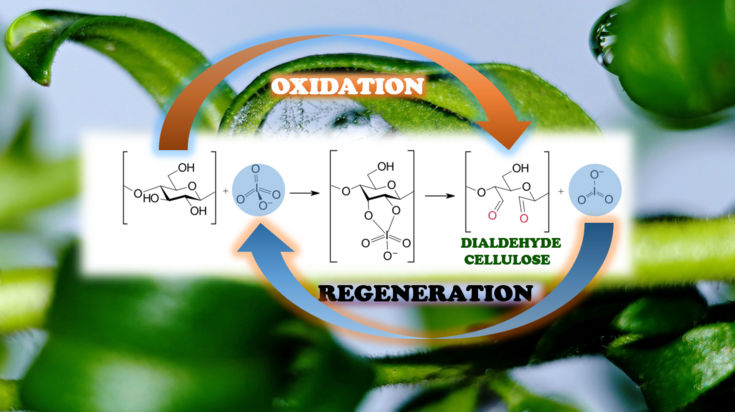Cellulose derivatives and biomass-based non-isocyanate polyurethanes (NIPUs) as binders
SUPERVISORS: Thomas ROSENAU, Hubert HETTEGGER
PROJECT ASSIGNED TO: Theodoros PETSOUKIS
The Industrial Revolution paved the way for the emergence of a plethora of technological advances and applications. Unfortunately, many materials that are being used and the physicochemical processes applied nowadays contribute to the ongoing pollution of the environment. For that reason, sustainable use of materials and technologies is necessary to prevent further environmental destruction. Cellulose, the most abundant biopolymer on earth and, with technologically interesting and promising physical, chemical, and mechanical properties, is an excellent candidate for being used as a renewable and environmentally friendly material.
Dialdehyde cellulose (DAC) is a cellulose functional derivative obtained by the cleavage of the C2–C3 covalent bonds of the anhydroglucopyranose repeating units of the cellulose backbone, followed by the introduction of aldehyde groups at the respective carbon atoms. The reactive aldehyde groups are technologically interesting since there are numerous ways of further chemical modifications to obtain high-tech, renewable-based materials. In most cases, the introduction of the aldehyde groups on the cellulose network is a result of periodate oxidation of cellulose using sodium (meta) periodate. However, this inorganic oxidizer is expensive, rendering the production of dialdehyde cellulose financially unfeasible.
This study is dedicated to designing and optimizing a method for regenerating periodate to prepare dialdehyde cellulose with a high degree of oxidation (DO) and high purity. The DAC and other cellulose derivatives and biomass-based non-isocyanate polyurethanes (NIPUs) are supposed to be used as binders in future applications.

